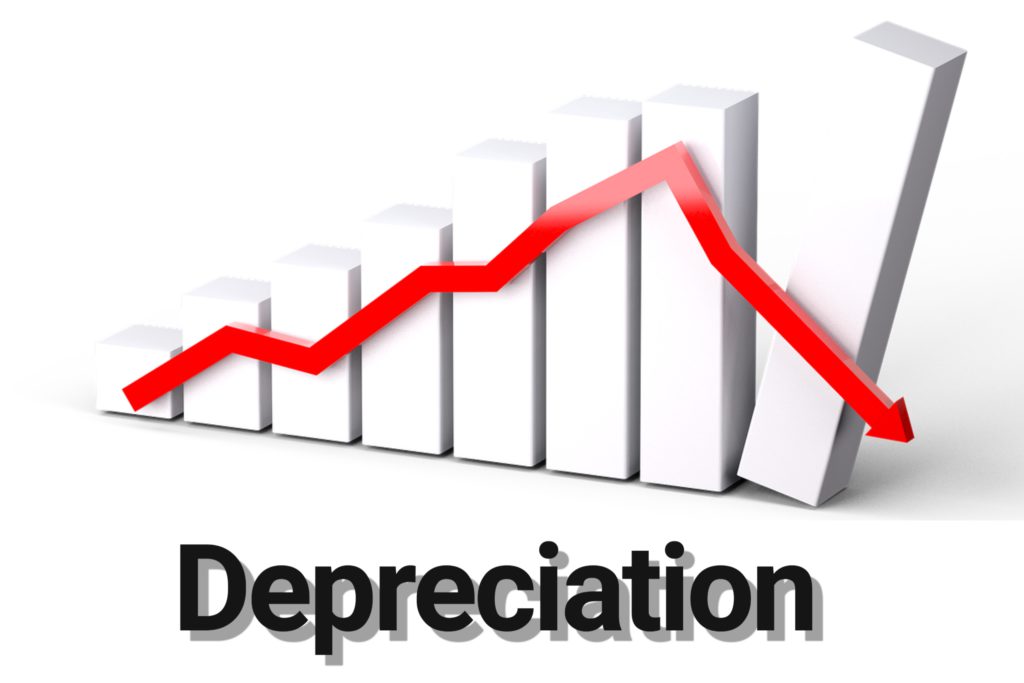Business includes different types of fixed assets like machinery, furniture, building, vehicles, computers etc. Each property has its own useful life. The main basis of useful life is the length of time the asset can be used, as the asset’s efficiency is continuously reduced due to usage. Due to natural or physical factors, the passage of time or new discoveries, the useful life of properties decreases. Sometimes the property is in good physical condition; But using old property becomes expensive as more efficient new property comes into existence. Due to this the life span of the properties becomes limited. Due to any of the mentioned reasons, the useful value of the property is constantly and permanently reduced due to the constant and permanent decrease in the useful value of the property is known as depreciation.
- Meaning and Definition of Depreciation
(1) Carter : “A gradual and permanent diminution in the value of property from any cause is termed pass is coming.”
(2) Spicer and Pegler : “Depreciation is a measure of the reduction of the effective life of assets due to some cause during a given period of time.”
From the above definitions it can be understood that the permanent decrease in the value of the property is called depreciation. At the end of a certain number of years the property becomes unusable for the specified use or purpose. Since depreciation is a time-related expense, depreciation is charged to the profit and loss as a non-cash revenue expense. Impairment indicates a decline in the asset’s useful value, so it is charged to profit and loss.
- Characteristics of Depreciation
(1) Fixed Assets: Depreciation is to be charged on the fixed assets of the business hence such assets are also called transitory assets. Also intangible assets like patents, copy rights, trademarks are also phased out over their fixed life. Continuity of business or liquid assets are not considered encumbrances. Eg, cash, stock, debtors etc.
(2) Use value : Impairment refers to a gradual and permanent decline in the utility value or use value of the property
(3) Time : Costs are time related costs.
(4) Revenue expense: Depreciation is charged to the profit and loss as a non-cash revenue expense.
(5) Deferrals : Deferrals are revenue expenditure but not expenditure paid in cash like salary and rent.
(6) Use of property : Congestion also depends on the use of property over time.
(7) At the end of the accounting year : The amount of depreciation is generally deducted from the value of the permanent property at the end of the accounting year.
(8) Provision : Depreciation is a type of provision.

- Necessity (Objectives) of Provision for Depreciation
Congestion is a different type of revenue expense from other business expenses. Depreciation is not an expense actually paid in cash at the time of accounting like expenses like rent, salary, labor etc. It is included in the accounts by providing for depreciation in the accounting period. The following points clarify the need i.e. the purposes for calculating depreciation.
(1) To be treated as a business expense : Passage is a revenue expenditure of accounting time and is not paid in cash.
(2) To find out the true and fair profit and loss : To find out the true and fair profit and loss of the business, it is necessary to take account of the losses. So it is borrowed at profit and loss.
(3) To find out the true and fair financial condition of the business: Balance sheet shows the financial condition of the business,
In which, out of the total assets of the business, the realizable assets are shown at cost. By showing the property at the discounted value, the balance sheet can represent the true condition of the property, on the basis of which the true and fair condition of the entire business can be ascertained. (4) Determining the true cost of production: Determining the cost of goods or services produced in the factory.
All costs affecting or related to production should be accounted for. Hence depreciation of all tangible assets used in production like other expenses must be taken into account while calculating inventories.
(5) Determining the true selling price of the good or service: To determine the selling price of the good or service, gross margin is determined. In which pass is also included.
(6) Retention of Capital : Out of the total capital invested in the business, a large amount is invested in fixed assets. Such assets become unusable at the end of their useful lives and capital is required to replace them with new assets. For the purpose of retaining such capital in the business, provision is made for encroachment on properties in the business.
(7) Complying with Statutory Provisions : Passage is calculated and recorded in accounts as per statutory provision